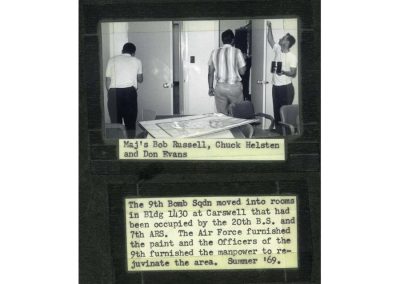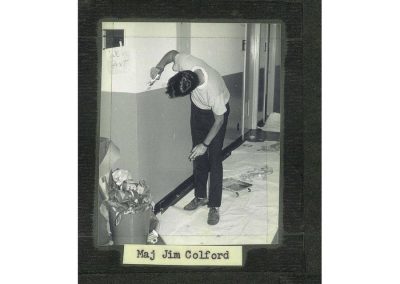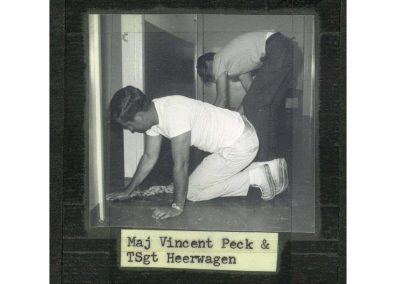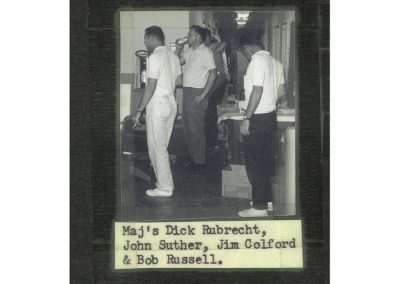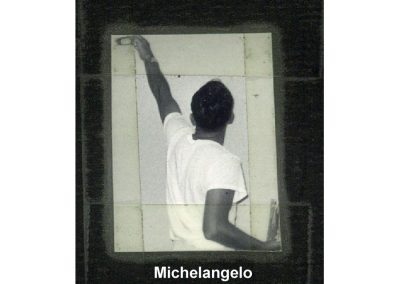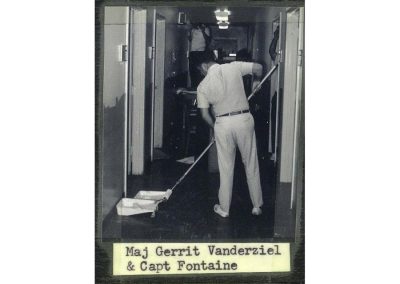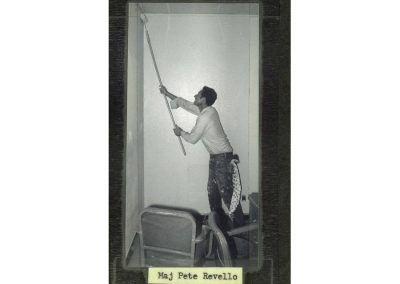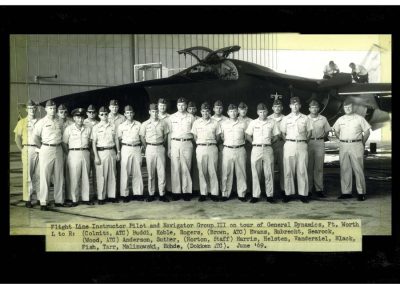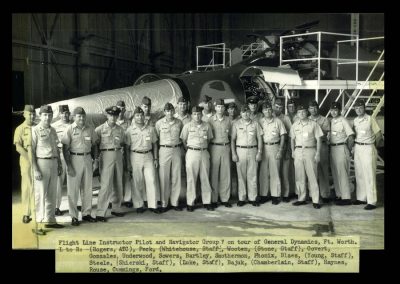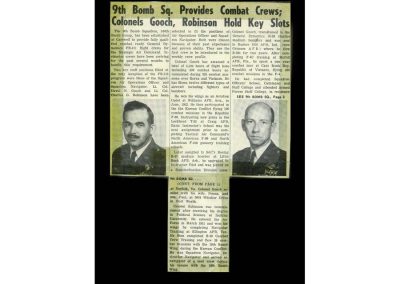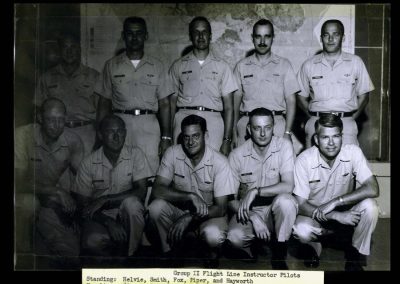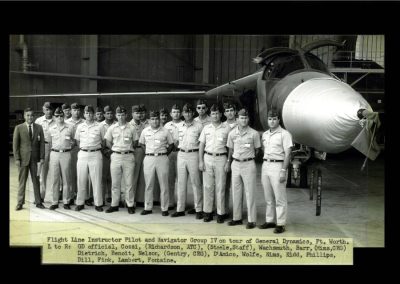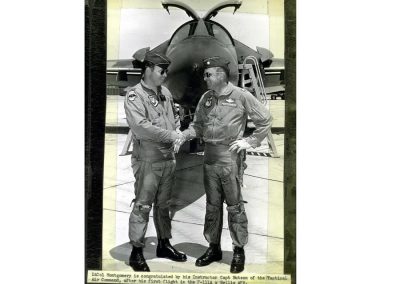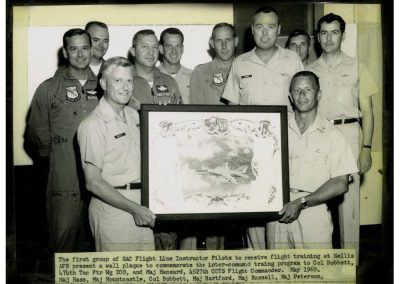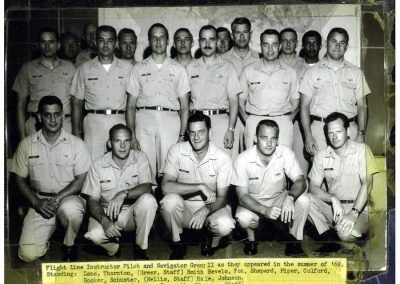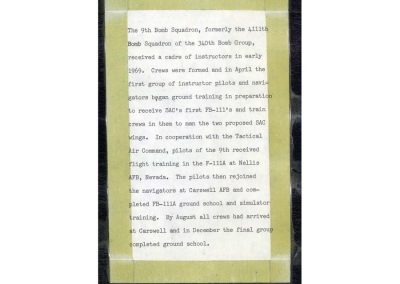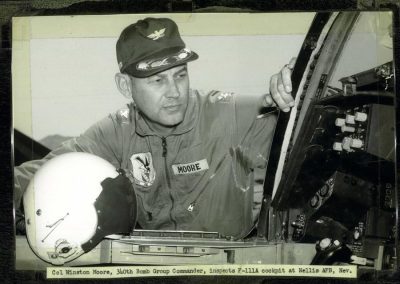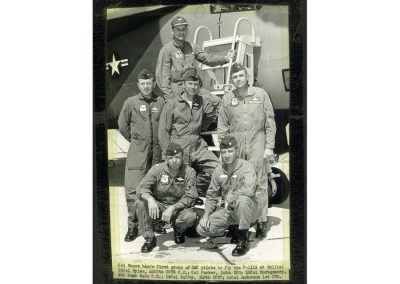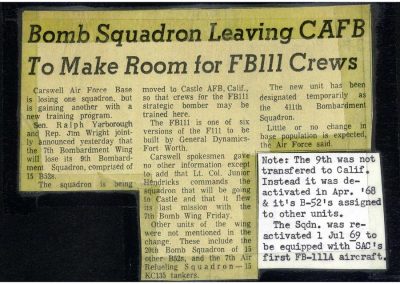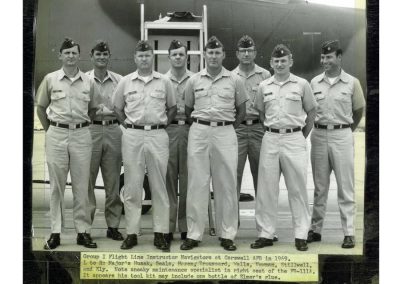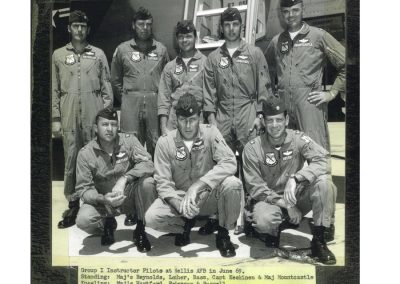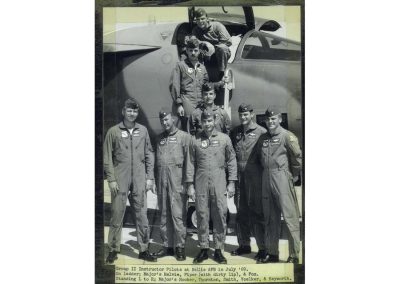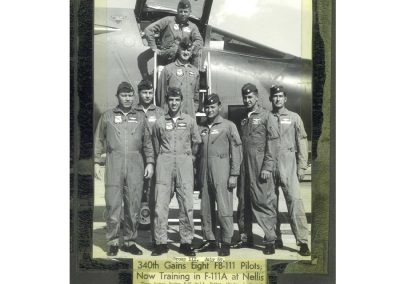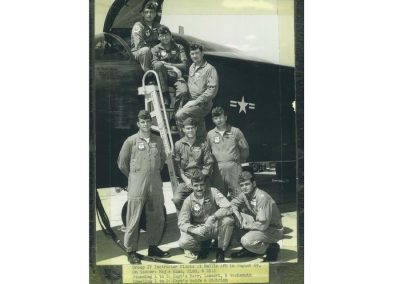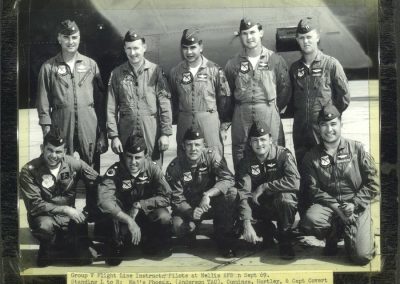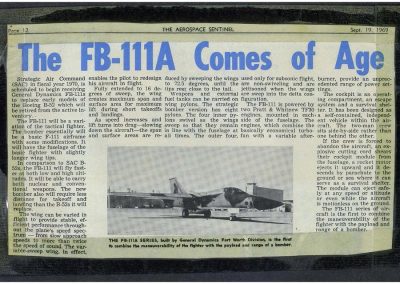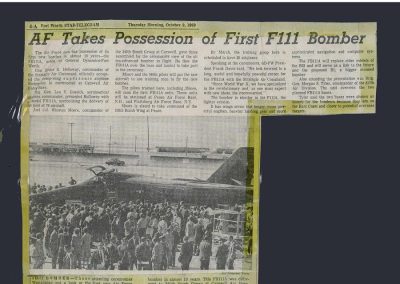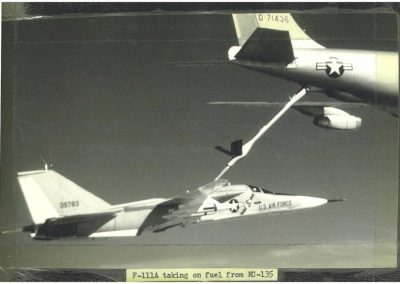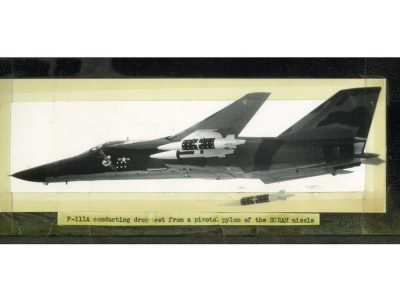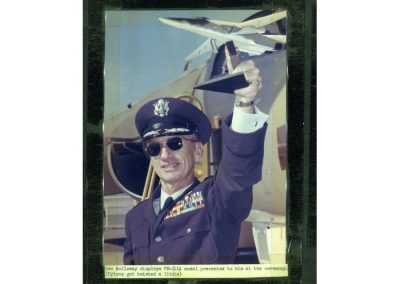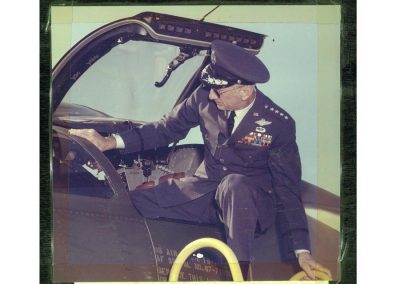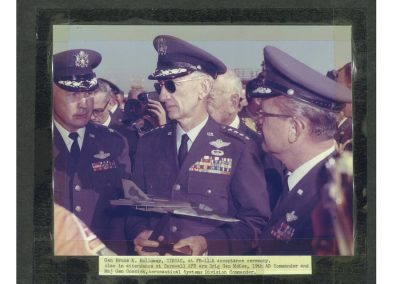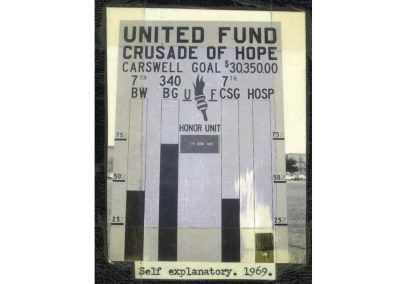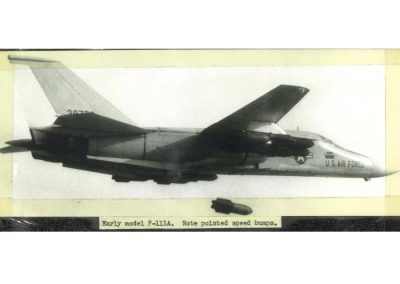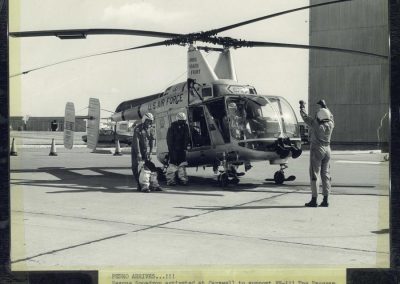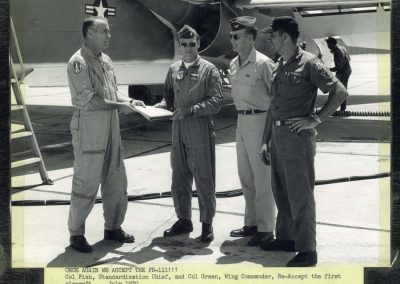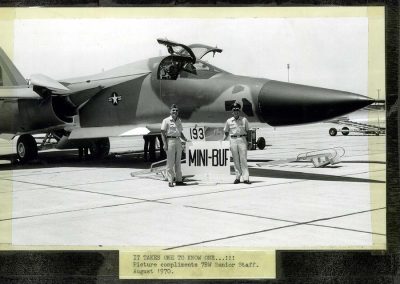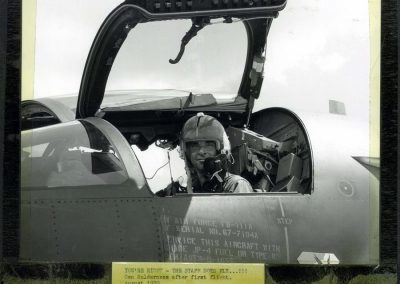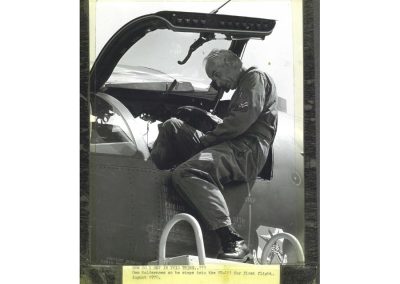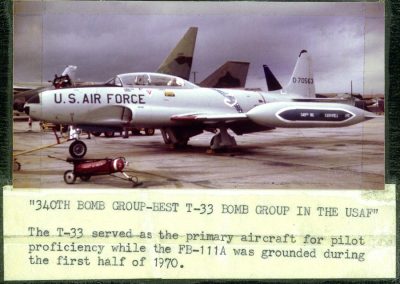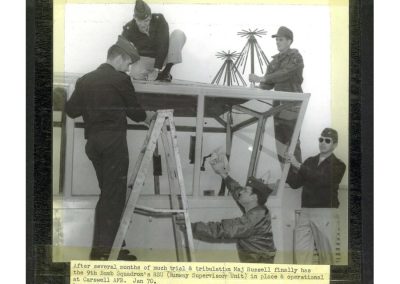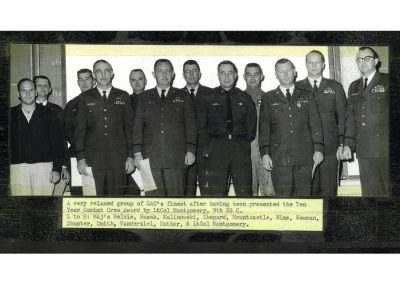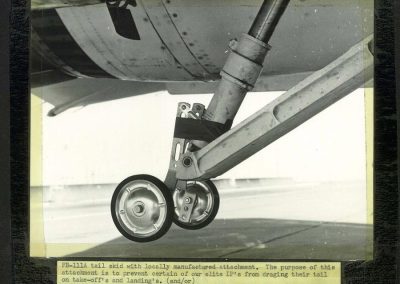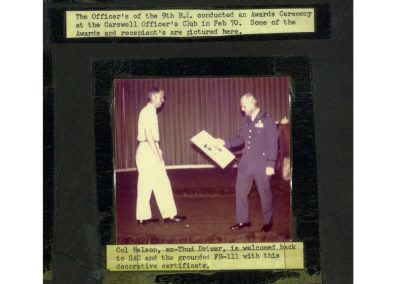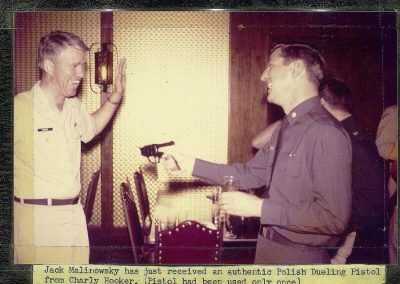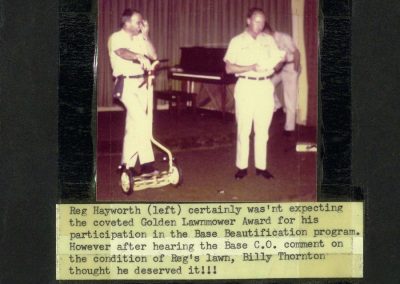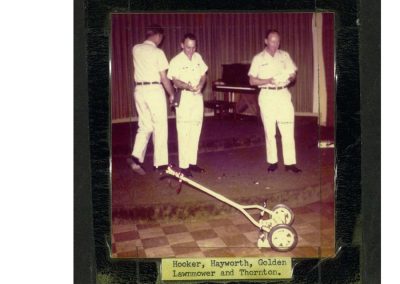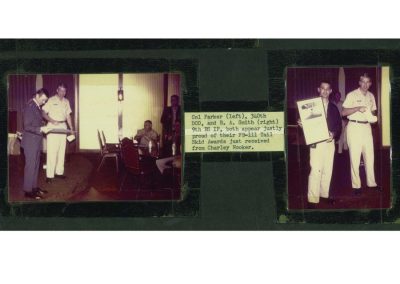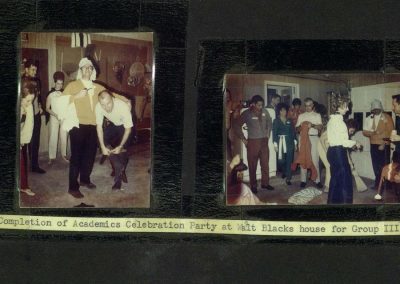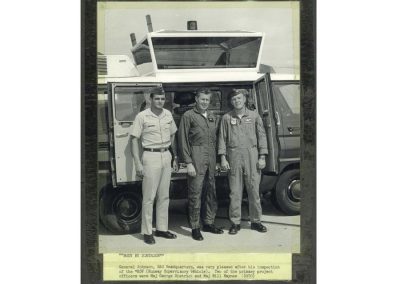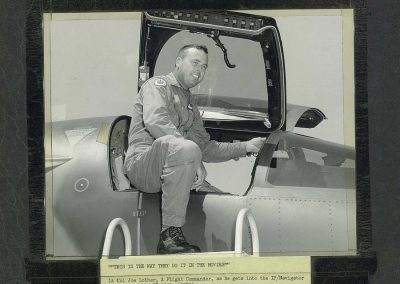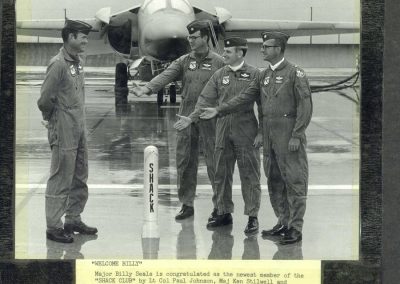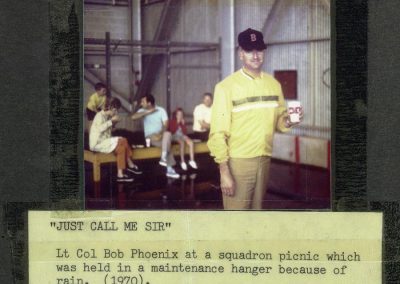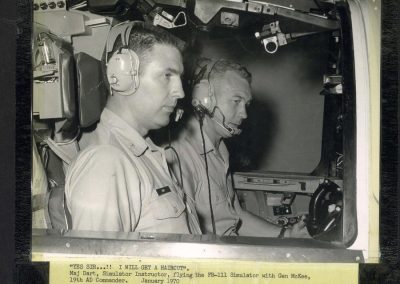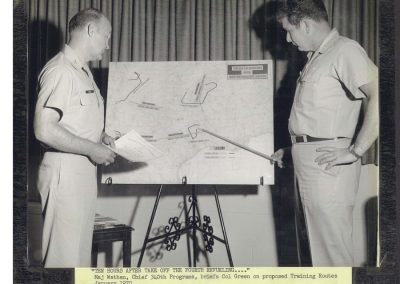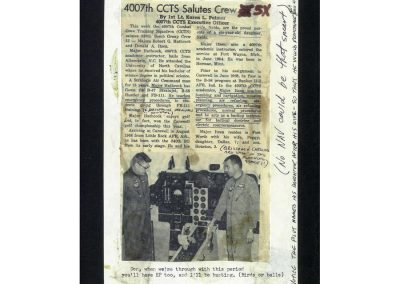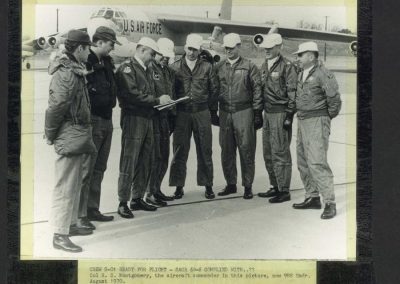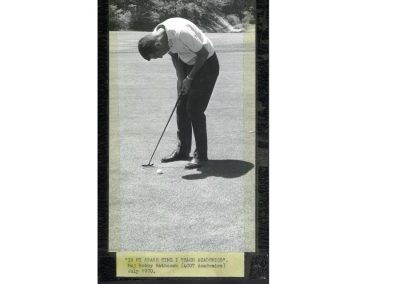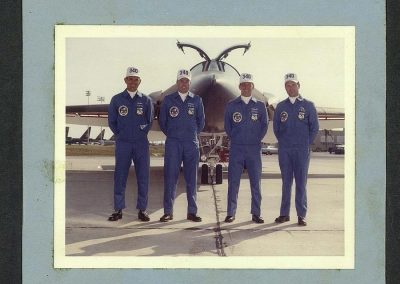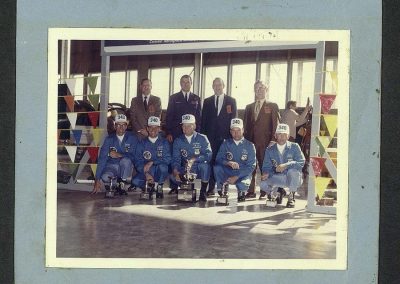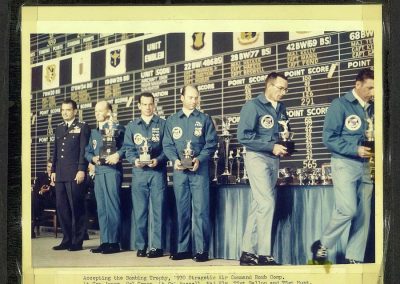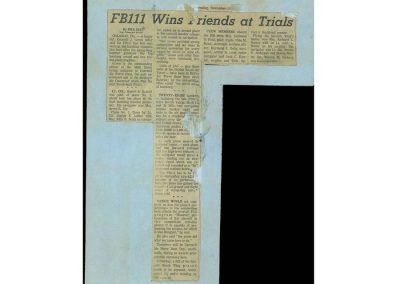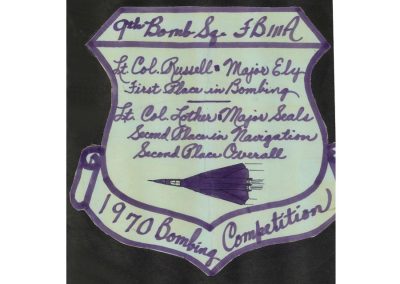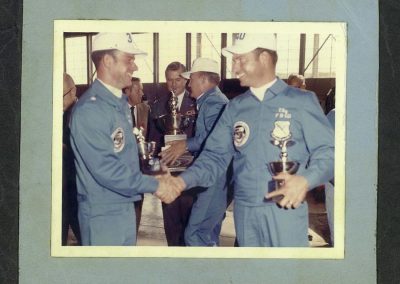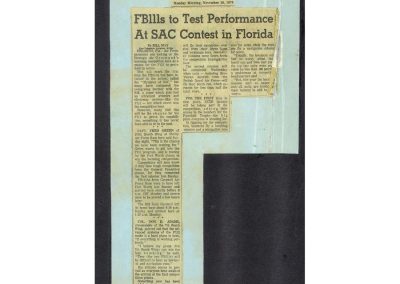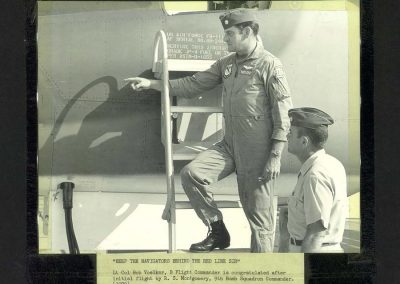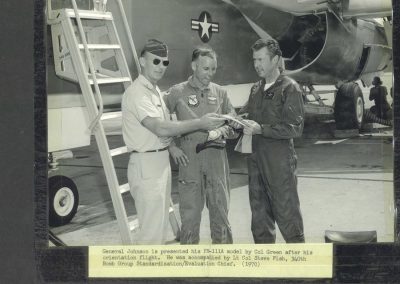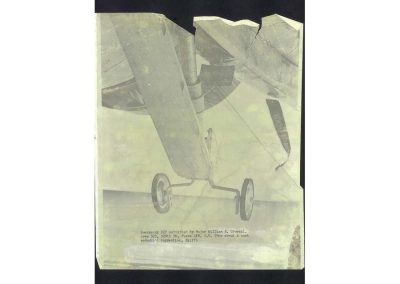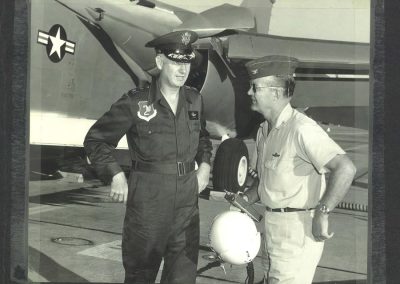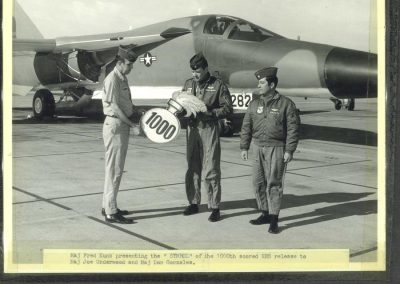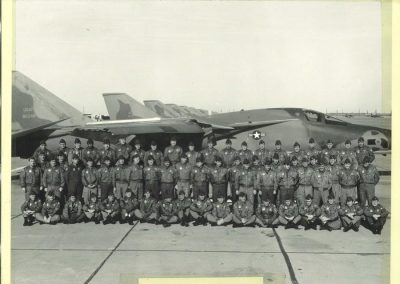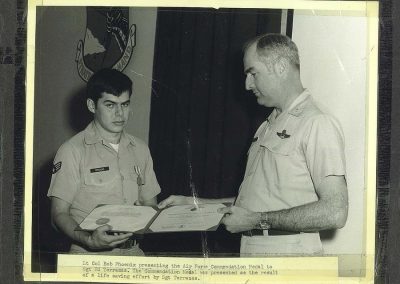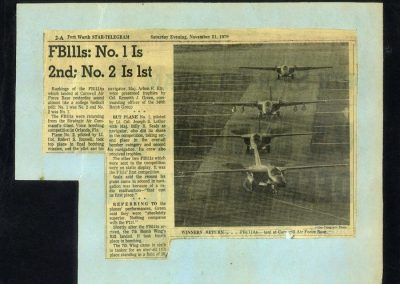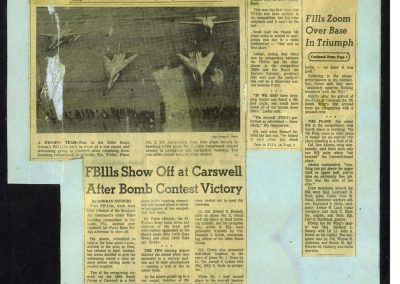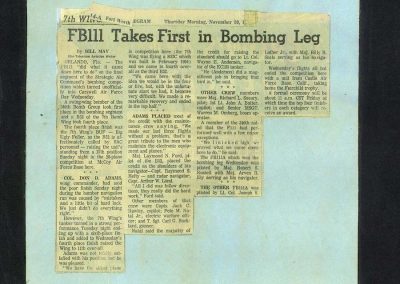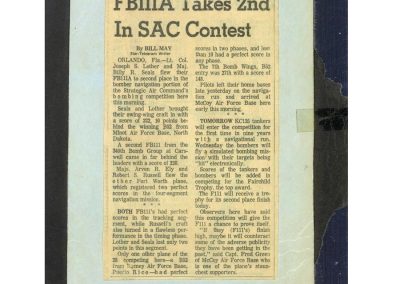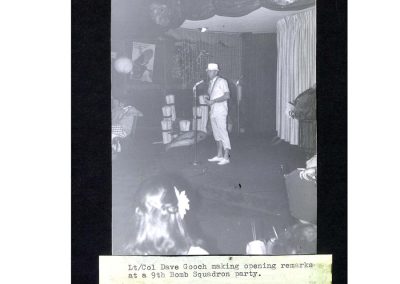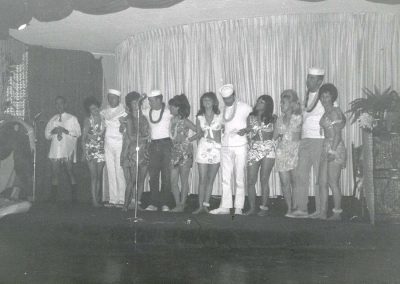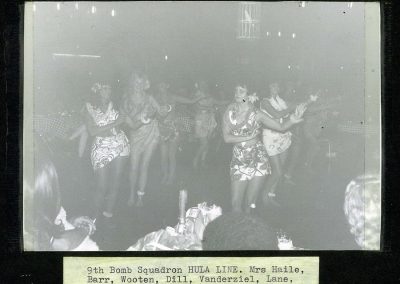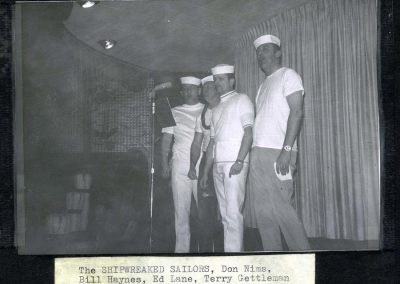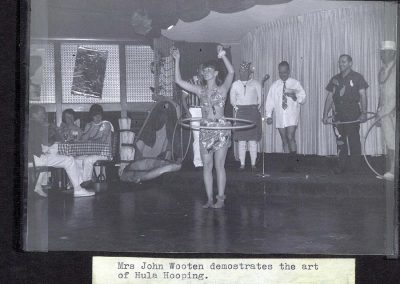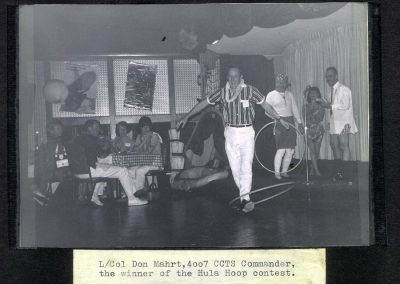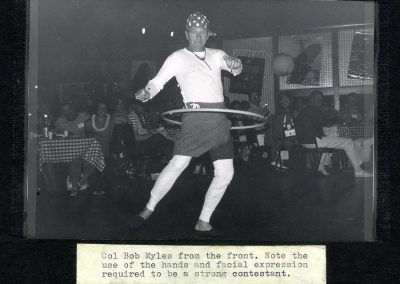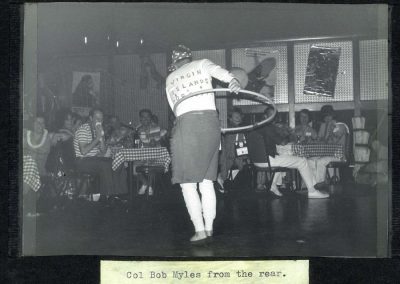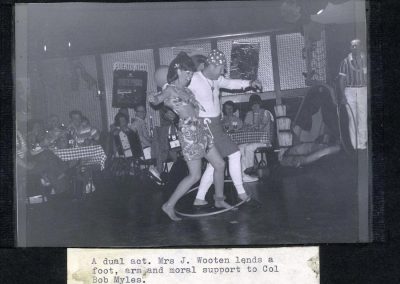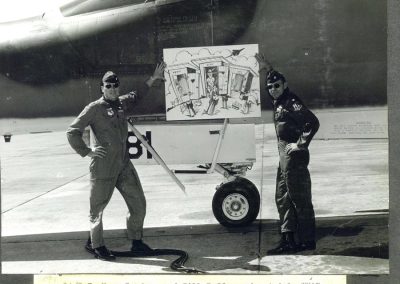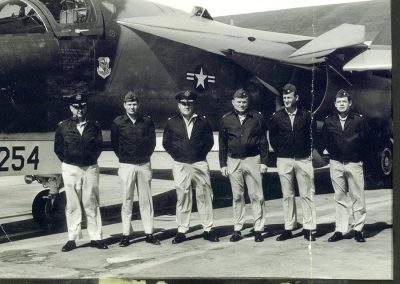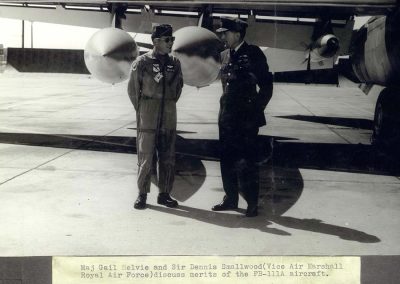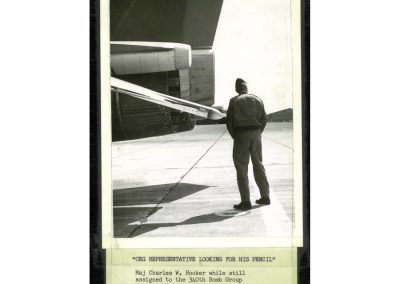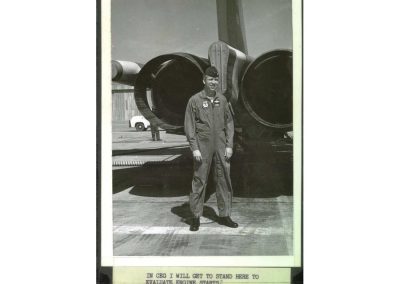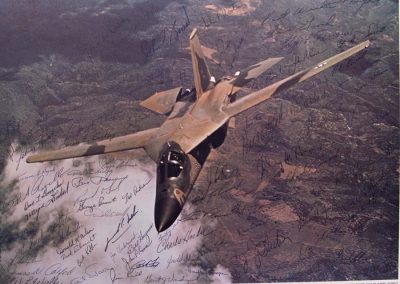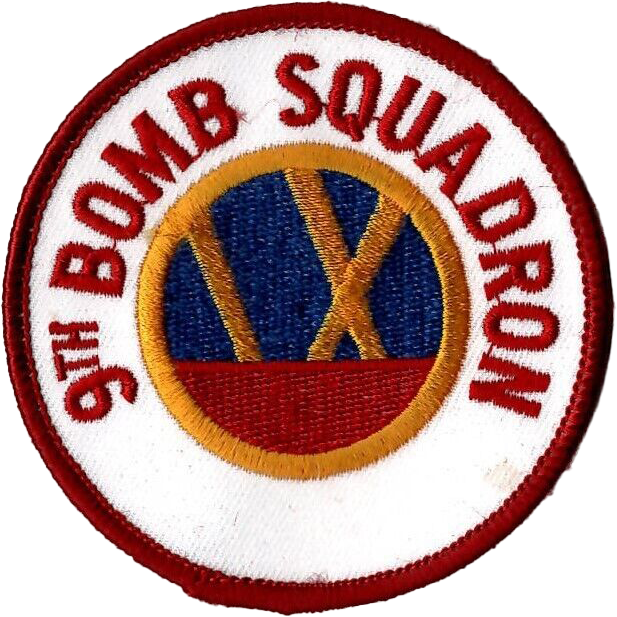
9th Bomb Squadron History
Formed in June 1917, the 9th is one of the oldest squadrons in the Air Force. During World War I, the squadron flew the Sopwith Scout and the Breguet 14 and was the first American night reconnaissance squadron to be organized. Later, it served with the Army Air Service and Army Air Corps in the Inter-War period and then served in Australia, Egypt and India during World War II, flying the B-17 and B-24. A part of Strategic Air Command during the Cold War, the 9th Bomb Squadron flew the B-29, B-36, B-52 and B-1 Lancer.
When the FB-111 program ended at Carswell, in 1971, the squadron returned to flying the B-52D Stratofortress, some in support of Strategic Air Command alert and some in support of conventional bombing in Vietnam.[4][10] From May to November 1965, the unit deployed to Andersen Air Force Base, Guam in support of Operation Arc Light missions. In early 1972, the unit returned to Andersen Air Force Base once again in support of Operation Arc Light. This time North Vietnam was the target. In October 1972, peace talks with the Vietnamese had reached an impasse. That, combined with increased enemy ground activity, was to see the 9th take part in a historical mission known as Linebacker II. Bombing targets in the Hanoi and Haiphong regions of North Vietnam, that mission helped bring the Vietnamese Communists back to the peace talks in Paris and a cease fire was signed on 28 January 1973. The 9th returned to Carswell in September 1973 and returned to their peacetime missions.
Today the squadron is engaged as part of the Global War on Terrorism and is based at Dyess AFB, TX flying the B-1
340 BG / 9th Bomb Squadron FB-111
Activated on July 2, 1968, at Carswell, the 340th Bombardment Group, though designated as such, functioned as a SAC Wing, with the 4007th Combat Crew Training Squadron as its operational squadron. Tasked with the primary mission of providing initial qualification training for aircrew members of the General Dynamics FB-111A, an all-weather strategic bombing version of the F-111, it served as an interim successor to SAC’s B-52 Stratofortress and Convair B-58 Hustler.
Due to delayed deliveries of the FB-111A from General Dynamics, the group’s training mission encountered setbacks. On October 8, 1969, the first FB-111A (No. 7) is formally delivered to the Strategic Air Command and entered service with the 4007th Squadron. Despite being officially declared operational, the FB-111A had not yet reached combat forces. Once achieving operational capability, the 4007th relocated to Plattsburgh Air Force Base, New York, becoming part of the 380th Strategic Aerospace Wing. Personnel and equipment were reassigned to the reactivated 9th Bombardment Squadron, making it the first SAC operational bomb squadron to fly the FB-111A.
In December 1969, the grounding of all F and FB-111As occurred following the crash of an F-111 at Nellis Air Force Base. During this period, the group utilized Lockheed T-33 T-Bird aircraft until FB-111 flying activities resumed in June 1970, with deliveries recommencing on July 25, 1970. By the end of September, the unit had acquired twenty FB-111A aircraft. Achieving initial operational capability with the 509th Bombardment Wing (393d and 715th Squadrons) at Pease Air Force Base, New Hampshire, in January 1971, the FB-111A demonstrated its readiness.
Upon inactivation on December 31, 1971, the 340th Bombardment Group possessed 38 FB-111As, which were subsequently transferred to Plattsburgh and Pease. This period marked a critical chapter in the group’s history, showcasing its adaptability and resilience in overcoming challenges to contribute to the nation’s strategic defense capabilities.



